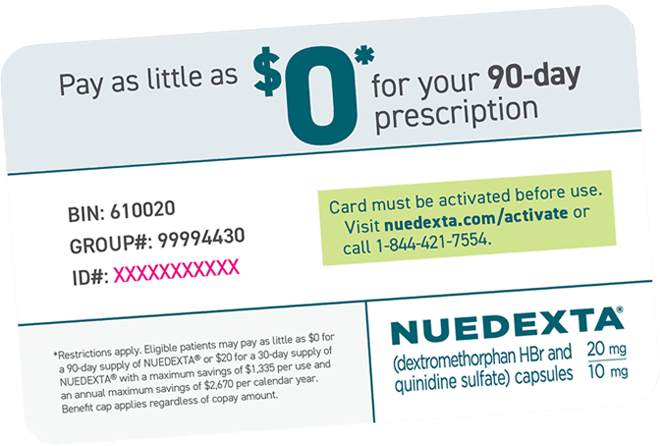Impact of Pseudobulbar Affect (PBA)

PBA’s impact on patients is substantial1
Pseudobulbar Affect (PBA) presents a considerable, incremental burden to a patient with an underlying neurologic condition or injury, such as:
- Stroke
- Dementia or Alzheimer disease
- Traumatic brain injury (TBI)
- Parkinson's disease
- Amyotrophic lateral sclerosis (ALS)
- Multiple sclerosis (MS)
Although PBA is diagnosed secondary to another neurologic condition, it is a separate, treatable disorder that is not to be taken lightly. Uncontrolled laughing and/or crying episodes have a substantial impact—resulting in embarrassment for the patient and their family. Because of fear of having a PBA episode in public, patients may restrict their social interactions.2 Your patients may not say something to you about their PBA symptoms for many reasons, but one question can help them open up to you about PBA’s impact on their life.
Why your patients aren’t talking about their PBA symptoms
Patients experiencing sudden, frequent, involuntary laughing and/or crying episodes may not talk to you about their symptoms for several reasons. According to the healthcare providers in the video below, these reasons may include:
1
They’re embarrassed by their outbursts.
PBA can strike anytime, anywhere. Because episodes are uncontrollable, patients may not be able to stop laughing and/or crying in inappropriate settings.
2
They may think it’s a symptom of a previously diagnosed condition.
For example, since crying is common in depression, patients may attribute their PBA crying symptoms to their depression. They may not bring up these symptoms because they don't realize that PBA is a separate condition.
3
They don’t realize that their symptoms are manageable.
If they don't know that treatment is available to reduce their episodes, they may not think to ask for help.
4
They don’t understand what’s happening to them.
Laughing and crying are normal displays of emotion, but in patients with PBA, they can be exaggerated or incongruent with their underlying mood. So, patients may not realize that what they're experiencing is part of a real, neurologic condition.
Just because a patient doesn’t say something to you doesn’t mean that PBA isn’t impacting them.

Ask the question, understand the impact
In one web-based survey (N=1052) of patients with an underlying neurologic condition associated with PBA or their nonpaid caregivers, respondents who described their uncontrollable laughing and/or crying episodes as “extremely” or “very” burdensome had experienced2:
Patients with PBA symptoms (n=399) were defined as those who scored 13 or greater on the Center for Neurologic Study-Lability Scale (CNS-LS).*
*The CNS-LS was validated as a measure of perceived episode frequency in amyotrophic lateral sclerosis and multiple sclerosis populations. The scale does not confer a PBA diagnosis.3,4
To find out if PBA is impacting your patient, simply ask them or their caregivers the following question:
Can you tell me about any changes in your laughing or crying since your [underlying neurologic diagnosis or brain injury]?
For more information about diagnosing PBA, visit our Diagnosing PBA page.





